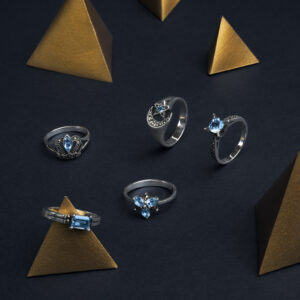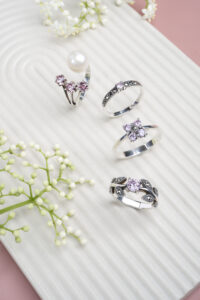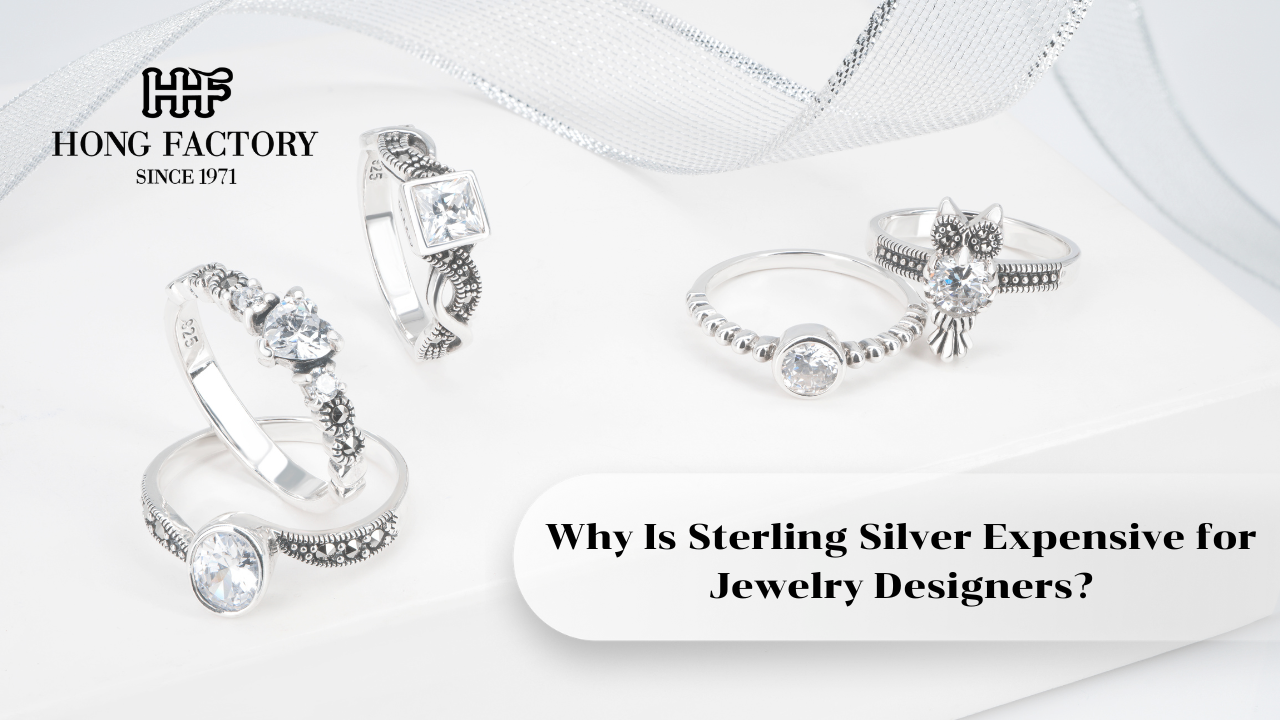Sterling silver remains one of the most beloved materials in the jewelry industry, admired for its balance between beauty, affordability, and versatility. However, many people wonder why is sterling silver considered expensive for jewelry designers? The answer lies in the quality of the metal, the craftsmanship required to transform it into stunning pieces, and the creative value that designers bring to each creation. 925
What Is Sterling Silver?

Sterling silver is composed of 92.5% pure silver and 7.5% copper or other strengthening metals. This combination provides both strength and brilliance, allowing jewelers to craft intricate designs that can withstand daily wear. Authentic sterling silver jewelry carries the “925” hallmark, confirming its purity and authenticity.
Because of its durability and luminous finish, sterling silver is a preferred medium for professional jewelry designers. It is versatile enough for both modern minimalist designs and intricate vintage-inspired collections.
Is Sterling Silver Expensive?
The question “Is Sterling Silver Expensive” arises often among customers and jewelry creators alike. While sterling silver is more affordable than gold or platinum, it still carries a higher cost than many base metals due to several important factors.
Reasons sterling silver can be costly for jewelry designers include:
- Material purity: With 92.5% real silver, the metal itself holds intrinsic value.
- Crafting challenges: Silver’s softness demands precision and skill to avoid damage during creation.
- Design complexity: Detailed settings, engravings, and stone work require time and expertise.
- Market fluctuation: Silver prices can vary with global demand and mining costs.
- Finishing and polishing: Achieving a flawless shine requires multiple professional steps.
For jewelry designers, these elements contribute to production costs but they also elevate the artistic and financial value of each finished piece.
Why Jewelry Designers Prefer Sterling Silver
Designers are drawn to sterling silver because it allows them to express creativity without the extreme costs of gold or platinum. It offers an ideal combination of beauty, malleability, and reliability.
Key reasons jewelry designers choose sterling silver:
- Versatility: Perfect for contemporary, classic, or statement pieces.
- Compatibility: Works well with a wide variety of gemstones, including turquoise, onyx, marcasite, and cubic zirconia.
- Workability: Easy to shape, engrave, and experiment with new techniques.
- Customer appeal: Sterling silver’s affordability attracts a broader audience while retaining luxury status.
This flexibility allows jewelry designers to innovate freely, balancing artistry with commercial success.
The Role of Craftsmanship in Cost

Creating jewelry from sterling silver requires more than just materials it demands exceptional skill. Jewelry designers often rely on traditional techniques such as hand-soldering, stone setting, filigree detailing, and polishing. Each process takes time and precision.
Unlike machine-made or mass-produced jewelry, handcrafted sterling silver pieces reflect personal artistry and dedication. Every design element from curve to clasp is carefully considered, increasing both production time and overall cost.
Sterling Silver vs. Other Metals in Design
Jewelry designers often compare sterling silver with other materials to find the right balance between cost, beauty, and functionality:
- Gold: More expensive and heavier, but less suitable for intricate, affordable collections.
- Brass and Stainless Steel: Cheaper alternatives, yet lack the value and elegance of real silver.
- Platinum: Extremely durable and prestigious, but far too costly for mass or custom design work.
Sterling silver strikes the perfect middle ground it’s luxurious, authentic, and affordable enough to experiment with, making it the designer’s favorite.
How Designers Add Value to Sterling Silver
Jewelry designers increase the value of sterling silver through creativity and craftsmanship. A simple sheet of silver can become a statement ring, a delicate pendant, or an intricate bracelet all through design expertise.
Ways designers enhance value include:
- Artistic concept: Unique ideas and inspiration add emotional worth.
- Custom design: Personalized jewelry commands higher prices.
- Stone selection: Pairing silver with rare or colorful gemstones enhances aesthetic value.
- Finishing touches: Polishing, oxidation, and texturing create distinctive looks.
- Brand reputation: Renowned designers can elevate sterling silver into high-end luxury.
This transformation process turns raw material into wearable art, justifying higher price points for designer jewelry.
The Emotional and Artistic Aspect
For jewelry designers, sterling silver is more than a medium it’s a canvas. Each piece tells a story of creativity, skill, and dedication. The emotional connection between designer and creation gives sterling silver jewelry a personal touch that mass-produced accessories can never replicate.
Customers often value this authenticity, understanding that they’re purchasing a piece shaped by human hands and artistic vision rather than machinery.
While sterling silver may seem less expensive than gold or platinum, it holds tremendous value for jewelry designers. Its purity, versatility, and compatibility with gemstones make it a cornerstone of creative expression. The craftsmanship and artistic input required to turn raw silver into fine jewelry elevate its worth far beyond the cost of materials.
So, the next time you admire a piece of sterling silver jewelry, remember you’re not just seeing metal and gemstones. You’re witnessing the result of artistic skill, technical mastery, and the passion of a jewelry designer who transformed silver into something truly timeless.
